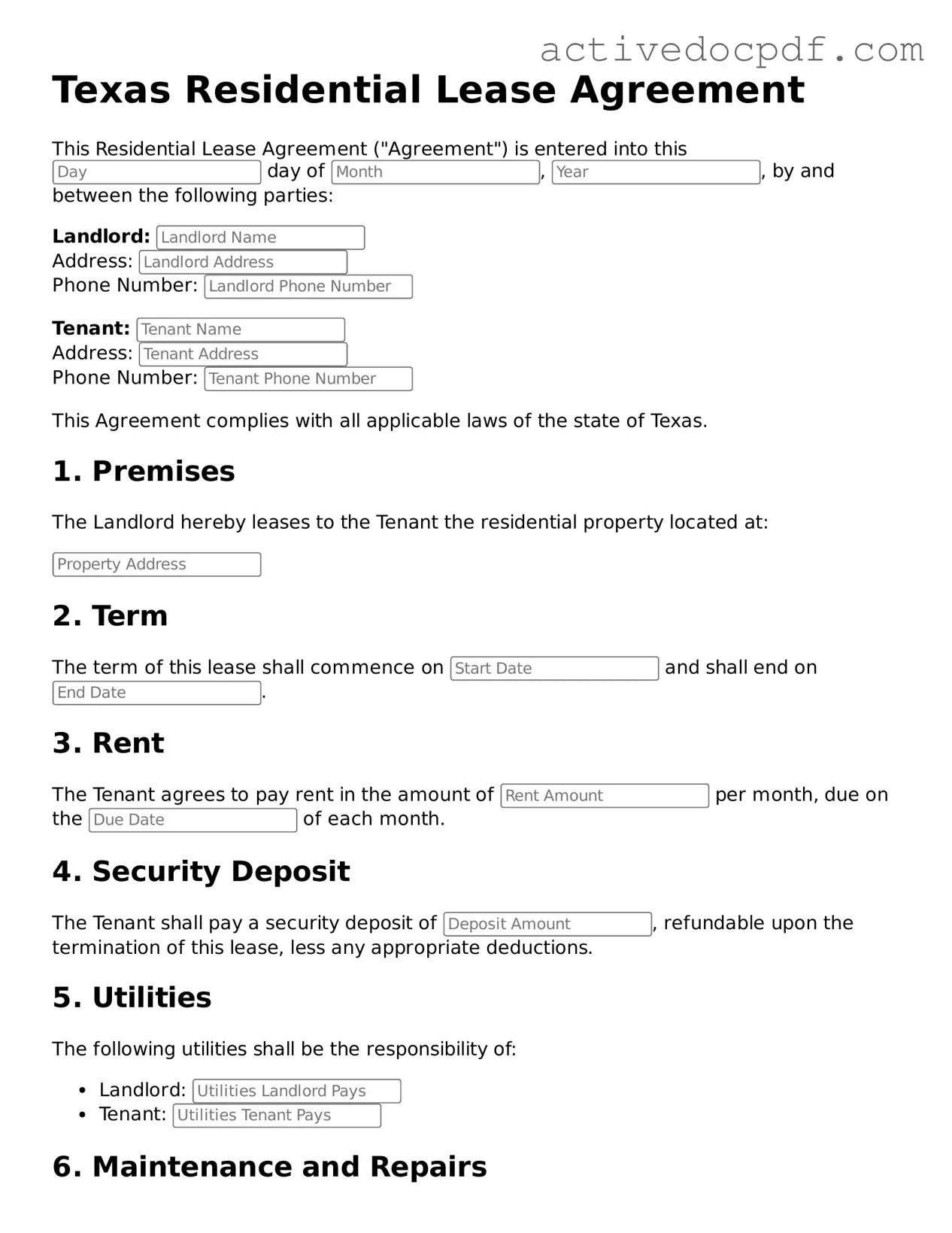What is a Texas Residential Lease Agreement?
A Texas Residential Lease Agreement is a legal document that outlines the terms and conditions between a landlord and tenant for renting a residential property. It includes details such as the rental amount, duration of the lease, and responsibilities of both parties.
The agreement generally includes:
-
Names of the landlord and tenant
-
Property address
-
Lease term (start and end dates)
-
Rent amount and payment schedule
-
Security deposit details
-
Maintenance responsibilities
-
Rules regarding pets and smoking
-
Termination conditions
How long is a typical lease term?
Lease terms can vary widely. Most commonly, they are either six months or one year. However, landlords and tenants can agree on different durations, such as month-to-month leases, which provide more flexibility.
Can a tenant make changes to the lease agreement?
Changes to the lease agreement can only be made if both the landlord and tenant agree. Any modifications should be documented in writing and signed by both parties to ensure clarity and legal enforceability.
What happens if the tenant fails to pay rent on time?
If a tenant does not pay rent on time, the landlord may issue a notice of late payment. Depending on the terms of the lease, the landlord may have the right to charge late fees or initiate eviction proceedings if the rent remains unpaid after a certain period.
Is a security deposit required?
Most landlords require a security deposit, which serves as protection against potential damages or unpaid rent. In Texas, the maximum amount that can be charged is typically equivalent to one month's rent, but this can vary. The lease agreement should specify the amount and conditions for its return.
What are the tenant's rights regarding repairs?
Tenants have the right to live in a safe and habitable environment. If repairs are needed, tenants should notify the landlord in writing. The landlord is generally required to address necessary repairs within a reasonable timeframe, depending on the severity of the issue.
Can a landlord enter the rental property without notice?
In Texas, landlords must provide at least 24 hours' notice before entering the rental property, except in emergencies. This rule helps protect the tenant's right to privacy while allowing landlords to fulfill their responsibilities.
What should a tenant do if they want to terminate the lease early?
If a tenant wishes to terminate the lease early, they should review the lease agreement for any specific terms regarding early termination. It may require providing written notice or paying a fee. Open communication with the landlord can also help in negotiating an exit strategy.
Are there any specific laws governing residential leases in Texas?
Yes, Texas has specific laws that govern residential leases. These laws cover various aspects, including security deposits, lease termination, and tenant rights. It is important for both landlords and tenants to familiarize themselves with these laws to ensure compliance and protect their rights.
